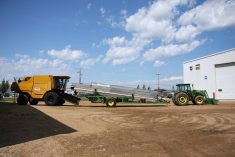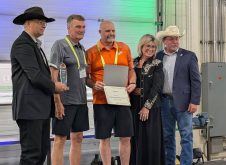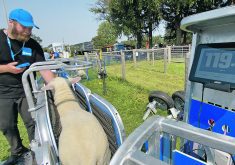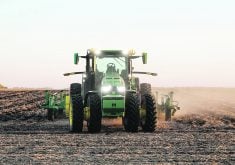Glacier FarmMedia – The digital revolution is here. The question is, are you going to embrace the technology, or are you going to try to hide from it?”
Qiang Zhang, biosystems engineering professor at the University of Manitoba, asked that question during a university-hosted event that explored technological advances in the livestock sector.
Zhang’s work often revolves around development of better, more effective barns. That includes farm adoption of livestock farming technology.
Read Also
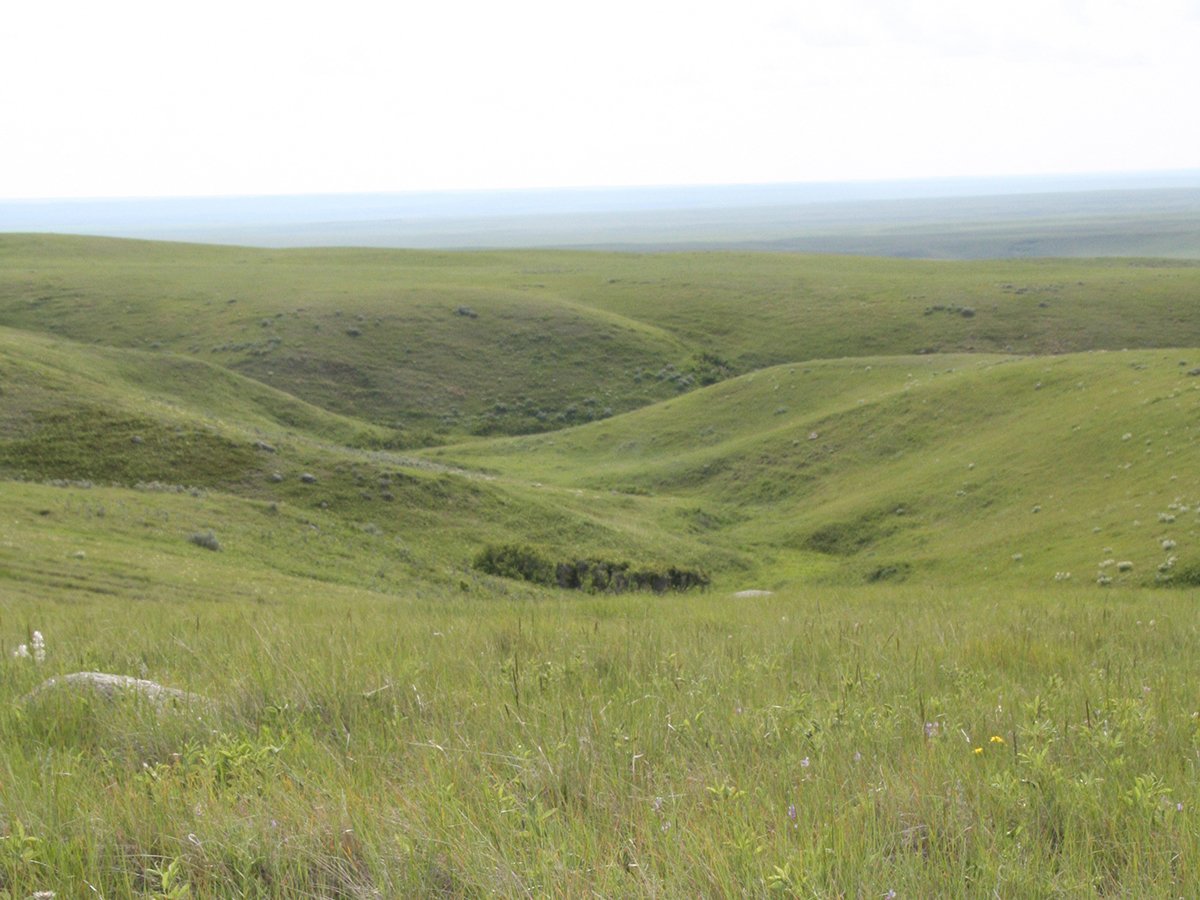
Alberta irrigation project on grasslands approved
Environmental concerns raised by Alberta conservation groups over irrigation expansion project within rural municipality
There are many examples of early adoption and emerging technologies in that space. In the dairy sector, there are fully autonomous milkers that recognize specific cows. Last year, one Manitoba hog farm tried a robotic washer to save on labour while maintaining sanitation.
Other innovations include smart weighing and handling systems, precision feeders that tailor rations to different animals and networks of barn sensors tied into data management programs, some of which incorporate artificial intelligence to better analyze and act on the dizzying flood of information.
The list of companies promising their product will help farmers streamline operations, reduce costs or provide data validation is long, and growing longer every year.
“If you don’t do anything, you’re going to be left behind,” Zhang said.
The advent of smart farming has created a new green revolution wave, he told attendees.
The green revolution typically refers to mid-20th-century advances in irrigation, plant breeding, mechanization and ag-related chemistry that underpins much of the current cropping system. Zhang said the turn of the century saw a second green revolution with advances in genetics like glyphosate-resistant crops.
That makes digital farming the third revolution.
“We’re moving from a mechanical analogue system to a digital technology system. That includes the internet and mobile devices, social networks, cloud computation and, more recently, artificial intelligence.”
He differentiates between the automated farm and the “smart farm.”
“If I put a thermostat in the barn and set the temperature at 24 degrees, the heater will be turned off automatically every time the temperature gets below that, but that’s not a smart system,” he said. “If I put a smart system in the barn, I don’t have to set the temperature. I just tell the system to make my pigs comfortable and happy.”
That simple request involves a lot of data. In a pig barn, it could include analyzing pictures (one system highlighted by Glacier FarmMedia earlier this year, for example, records pig weights via images captured with a 3D camera), recording their sounds and monitoring their movement.
“When we put all that information together, it ought to give the system enough information to make a decision,” said Zhang. “That is considered to be a smart system.”
The modern livestock farm has a lot of moving parts, Zhang noted. Operators must manage costs, including labour, energy and feed. They must ensure animals are healthy and disease-free. They want the best genetics for the best quality meat and the most return, and have to know what’s happening in the markets.
Handling that complexity is where the smart farm approach comes in, he said. It gathers all that information and streamlines the decision-making process.
Zhang cited three components that make up any smart system. The first is information gathering with various types of sensors and the second is communication and data transfer, whether that be via cellular, WiFi, or Bluetooth. The third component is information processing and integration.
For a smart livestock farm, integration could mean the system sends suggestions to the farmer to take action, or it could need no human action, with recommendations automatically triggering equipment in the barn to take action.
A well-designed smart farm can increase efficiency, reduce farmer workloads, improve productivity, reduce costs, minimize environmental impacts and improve animal health and welfare, Zhang said.
“The bottom line here is to increase the economic return of farming.”
That also adds value to the supply chain, he added.
“It goes from meat processing to the consumer.”
Zhang pointed to one European study that found consumer perceptions of smart livestock farming are very positive, largely because it offers food product traceability and transparency.
One smart farm concept, known as the “digital twin,” is particularly exciting for Zhang.
“A digital twin is just a digital mirror of a physical system,” he said.
In the context of creating a digital twin of an animal, data would be gathered by sensors that could include a mix of wearable, swallowable or external technology. That data would be aggregated to create a baseline snapshot of the animal at a given time.
The process would then continue to monitor the real animal and compare results with the baseline.
“The most important thing here is that you have bi-directional data flow and intelligent feedback,” said Zhang. “So your digital twin talks to the real system in real time.”
Modern pacemakers work on a similar feedback loop. The technology can monitor heart activity, adjust pacing based on physiological feedback and store data for health care providers.
Ideally, the farmer would create a digital twin for the whole barn.
“Then you also have a picture of things like the ventilation and temperature monitoring systems and you can put all those things together,” Zhang said
The “resolution” of the digital twin depends on the depth of the data — the number of data points being monitored. Zhang expects that resolution will increase over time as sensor technology advances. Eventually, a high-resolution, true digital twin may become achievable.
“It’s complicated stuff. I don’t know how many years it will take, but I see a big future.”







